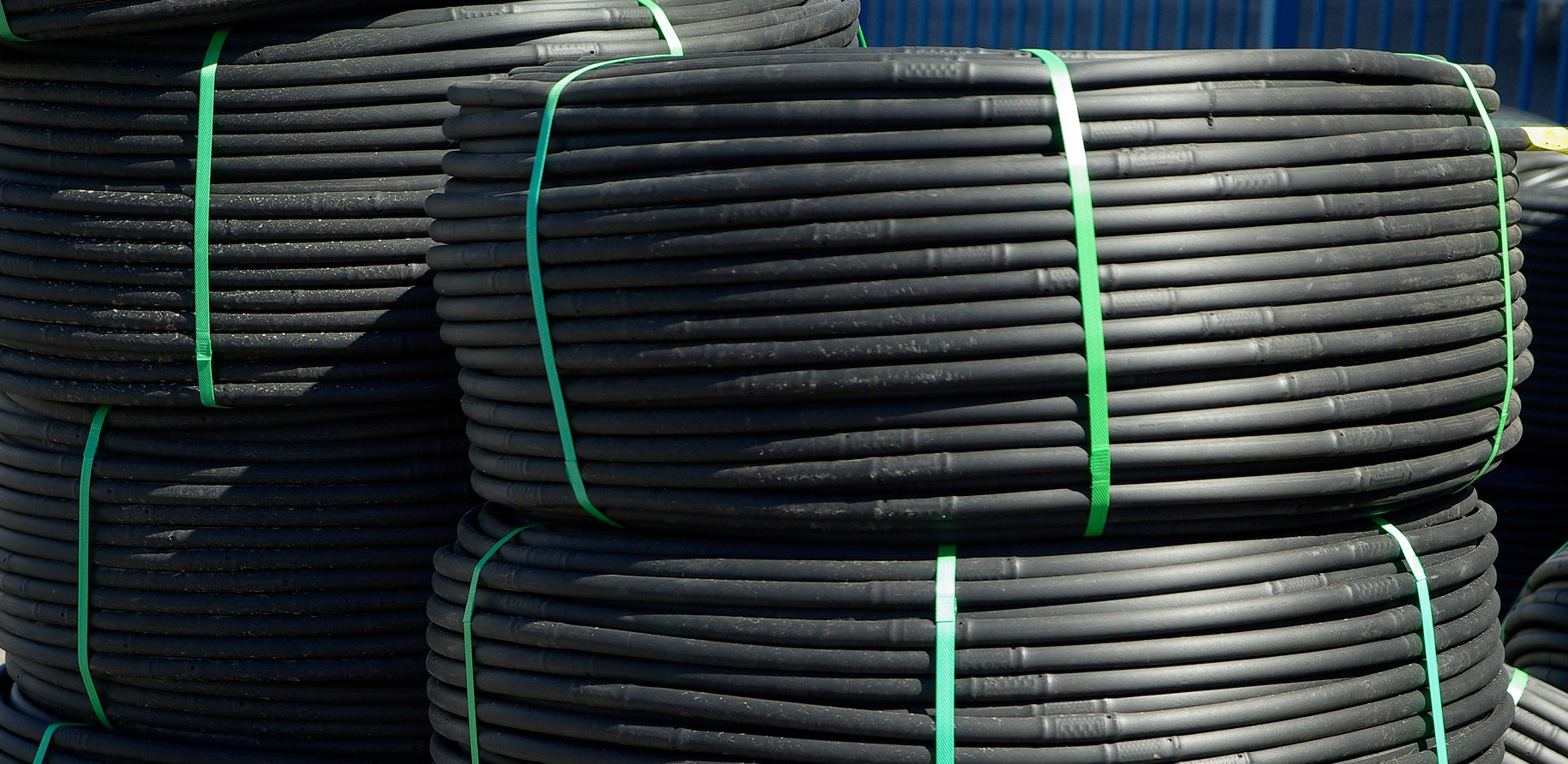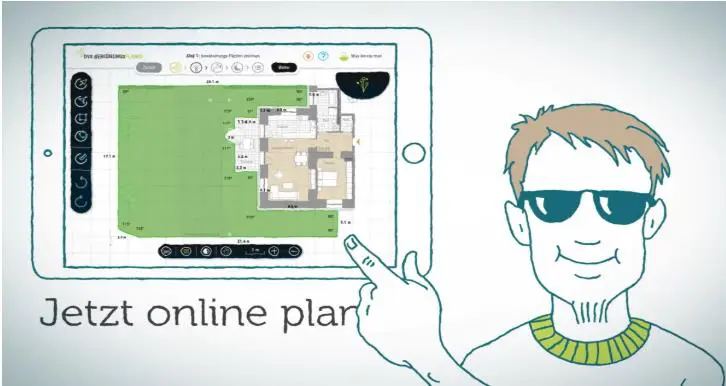While PVC pipes are traditionally used on the west coast of the USA, PE pipes are primarily used on the east coast. In Europe, almost exclusively PE pipes are used, in Australia both systems can be found. In this article you can find out what advantages and disadvantages both pipe types have and which of the two I recommend to use.
Even if discussions among long-term users can quickly degenerate into real religious wars about which of the two materials would be better suited for irrigation, let me first say: Both systems are well suited for garden irrigation and have been used successfully for many years. You can’t go wrong with either of them and both usually last for decades!
Why are different systems used at all? This has primarily to do with tradition and habit. In different countries and regions, different systems have prevailed over time and because you know them, have experience working with them and they are available in local hardware stores, you remain loyal to them. In general, one can say that PE pipe is more prevalent in areas where it freezes in the cold season and PVC pipe in areas where this is not the case. This has to do with the fact that PE pipe is a little more frost-resistant.
What are the differences between PE and PVC pipes?
Material
Both are plastic pipes, but with very different properties: Pipes made of polyvinyl chloride (PVC) are rigid and not flexible. They are sold in individual pieces, usually 20 feet long. Polyethelene (PE) tubing, on the other hand, is flexible and lighter, and is sold coiled in full rolls, typically 100 to 300 feet. PE pipes can normally be ordered in the normal way as a parcel by post, whereas PVC pipe pieces usually have to be shipped by a courier due to their unwieldy length.
Compared to PVC pipes, PE pipes are considered to be more environmentally friendly because they are easier to recycle, contain no volatile plasticizers and require fewer resources in production.
PVC pipes are available in two qualities, schedule 40 and schedule 80. Schedule 40 (white color) is usually the pipe of choice for private irrigation. The heavier-walled schedule 80 (grey colour) is even more resistant and intended for industrial and chemical applications. Even schedule 40 can withstand pressure loads of around 300 psi, so it is very strong and more than sufficient for use in private gardens.
PE pipes can withstand less high pressure loads than PVC pipes, but have been successively further developed in this regard in recent decades. PE-HD (High Density) pipes are usually used for irrigation solutions. PE-HD pipes are available on the market with different maximum pressure loads, the best of which are suitable for up to 230 psi. This is also more than sufficient for the usual private irrigation systems.

Example of an irrigation system with rigid PVC pipes

For comparison, a system with flexible PE pipes
A special type of PE pipes are PE-X or PEX pipes. PEX pipes are PE-HD pipes in which the molecular structure has been modified by so-called cross-linking so that they have higher temperature and pressure stability. These were originally used primarily in the heating sector, but are now increasingly being used as house supply lines for gas and drinking water. Due to their slightly higher maximum pressure load capacity and their resistance to surface damage (notches) compared to PE-HD pipes, they also represent an alternative for use in irrigation areas that have particularly high demands.
However, they are significantly more expensive than normal PE-HD pipe and it is controversial whether their use does not overshoot the mark. They are currently only used to a limited extent and are then only used for the constantly pressurized part of the pipeline from the water connection to the solenoid valves (the “mainline”).
PVC pipe at Amazon (here you can sometimes order it in pieces of the desired length):
Auto Amazon Links: No products found.
PE-HD pipe at Amazon:
Auto Amazon Links: No products found.
PEX pipe at Amazon:
Auto Amazon Links: No products found.
Laying
When laying PE pipes, connectors are only used where they are necessary. So e.g. to connect a sprinkler or if an abrupt change of direction is required. If this is not the case, long distances can also be covered without a connector. This is an advantage as a non-essential connector is always the best way to connect, as the weak link in an irrigation system is usually not the pipe but the joints between the pipes. This reduces the number of possible points at which leaks can occur and there is less pressure loss. And due to its flexibility, PE pipe can also run around curves or be threaded through bottlenecks with slight changes in direction.
PVC pipe is used in single straight lengths of 20 feet. Therefore, a connector must be set at least every 20 feet to connect the individual pieces together.
Both PVC pipes and PE pipes can be cut with a fine saw or even more professionally with a special pipe cutter.
PVC pipes are traditionally glued to the connector: First, a special primer is applied to the end of the pipe and to the inside of the connector, and then special PVC glue (“cement”) is applied over it. After the pipe and connector have been put together, it only takes a few seconds for the adhesive connection to be made. This can no longer be loosened without destroying the pipe, but the connection remains sealed forever if you have worked properly.
Alternatively, push to connect fittings for PVC pipes have also been available in recent years, in which the pipe is simply pushed into the connector and the pipe and connector are held together by a locking mechanism.
With PE pipes and PEX pipes, only such push to connect fittings are used. This makes laying even easier and has the advantage that you can disconnect connections at any time, for example if you mismeasured something or want to change something later.
UV resitance
In this respect, PE pipe has an advantage over PVC pipe, although the point hardly matters if the pipe is laid underground, as is usually the case. PVC pipe quickly becomes brittle when it comes into contact with the sun’s rays, while PE pipe can also be exposed to the sun for a longer period of time. Above-ground drip lines made of PE last 20 years and more.
Frost resistance
PE pipe is significantly more frost-resistant than PVC pipe and is therefore primarily used in colder latitudes. However, PE pipe such as PVC pipe should also be drained before winter so that the water does not freeze in the pipe and damage the pipe as a result.
Pressure loss
This means how much water pressure is lost due to friction when flowing through the pipe. PVC and PE have approximately the same roughness value, so the pressure loss for pipes with the same inner diameter is approximately the same for both materials.
Conclusion and recommendation
A perfect irrigation solution can be installed with both PVC pipe and PE pipe. If you already have preferences for one or the other, there is nothing wrong with sticking with your preferred product. A look at the range offered in the local hardware store can also be an important argument if one or the other product dominates there. Because in an emergency, you might not want to be dependent on online orders, but rather be able to get replacement products on site.
If there are no preferences and local availability is not the main criterion, then I would personally prefer PE pipe. This is more environmentally friendly, easier to use with the associated push to connect fittings and you save on the installation of unnecessary connectors. It thus makes installation much easier, especially for non-professionals, and is therefore becoming increasingly popular on the market compared to PVC pipes. This is also due to the fact that PE pipe has been further improved in recent years, so that today it can easily meet the pressure requirements that are common in the private sector. In addition, it has also become cheaper in recent years.
At the moment I see little point in using PEX pipe for the typical private user. This is simply not necessary, as high-quality PE-HD pipe is usually completely sufficient for the higher permanent pressure in the mainline, but the PEX pipe costs a lot more. This would be an issue at most when supplying a very large garden plot with a correspondingly powerful pump. Then you could possibly realize the first meters up to the solenoid valve (mainline) with the even more durable PEX pipe and the lines after the valves (laterals) with PE-HD pipe. Otherwise PEX pipe is only an issue for larger, commercial users.









